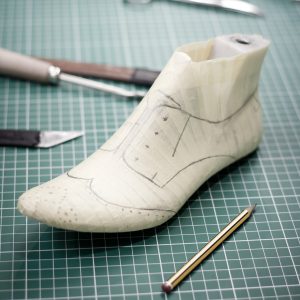
My father was a shoe-maker, which sounds more glamorous and interesting that it really was. He worked on the production line, pulling the “upper” leather down over the side of the last and stapling it to the insole – two sides to each shoe, two shoes to a pair, 36 pair to a case, all day long. He was a “side-laster”; nothing more, nothing less.
I don’t know how he learned the job, exactly, but he had only a third-grade education and must have been trained on the job. He was fortunate enough to be retired before the information age fully took root and eliminated the need for his skills and experience, at least in the U.S.
Needless to say, manufacturing has changed over the last twenty or thirty years. And as the “Greatest Generation” fades into history and the baby boomers reach retirement age, the next generations of factory workers are moving into a very different world of manufacturing. Very little factory work involves repetitive, manual tasks in a noisy, smoky environment. Workers are more likely to be controlling and monitoring machines that do the actual work. And those that do perform manual tasks are likely to be assisted by automation, directed by computer, and reporting their accomplishments and measurements through data collection devices.

But today’s under-forty factory workers have grown up with technology and would be lost without it. They are not afraid of technological change because they have lived with it practically all their lives. Many new hires actually base their decision on where they want to work in part on the technology that the hiring company uses.
Anyone with budget responsibility knows that technologies change – today’s breakthrough tools and techniques are likely to be behind-the-times (if not obsolete) before you know it. So new investments are constantly required and the programmers, operators, and users must all be retained and familiarized with the new systems. Today’s younger workers do not fear or resist this kind of change – but they deserve the proper tools that will help them make good use of the new systems and generate the return on investment you expect and require. When I was in the systems implementation business, I would always advise my clients “whatever you have budgeted for user training, double it – it will be the best investment you’ll make in your system’s success.”
Technology is a huge and growing part of manufacturing today and will continue to be in the foreseeable future. The new manufacturing employee is more likely to embrace these new technologies than the traditional workers of the past. But don’t neglect training and education associated with any upgrades, improvements or replacement technologies to provide these workers with the tools they need to get full benefit from your technology investments.
Editor’s note: To read more about the workforce of the future, check out the article in Compass called Virtual Platforms Deliver Lifelong Learning for Workforce of the Future.
